| Listing 1 - 10 of 10 |
Sort by
|
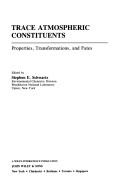
ISSN: 00652563 ISBN: 0471876402 9780471876403 Year: 1983 Volume: 12 Publisher: New York Brisbane Singapore Wiley
Abstract | Keywords | Export | Availability | Bookmark
 Loading...
Loading...Choose an application
- Reference Manager
- EndNote
- RefWorks (Direct export to RefWorks)
Acid rain --- Atmosfeer--Chemie --- Atmosferische chemie --- Atmospheric chemistry --- Atmosphère [Chimie de l' ] --- Chemie [Atmosferische ] --- Chemie van de atmosfeer --- Chemistry [Atmospheric ] --- Chimie atmosphérique --- Chimie de l'atmosphère --- Pluie acide --- Troposfeer --- Troposphere --- Troposphère --- Zure regen --- Research --- Acid rain. --- Atmospheric chemistry. --- Troposphere. --- Environmental Sciences and Forestry. Environmental Management --- Environmental Pollution --- Air Pollution --- Air Pollution. --- United States --- Atmospheric chemistry - Research - United States
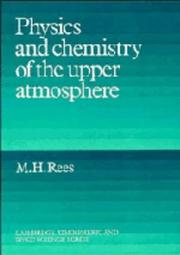
ISBN: 0521323053 0521368480 Year: 1989 Volume: vol *2 Publisher: Cambridge : Cambridge University Press,
Abstract | Keywords | Export | Availability | Bookmark
 Loading...
Loading...Choose an application
- Reference Manager
- EndNote
- RefWorks (Direct export to RefWorks)
Aeronomy --- Aerophysics --- Atmosfeer [Hogere ] --- Atmosfeer--Chemie --- Atmosferische chemie --- Atmosferische fysica --- Atmosphere [Upper ] --- Atmospheric chemistry --- Atmospheric physics --- Atmosphère [Chimie de l' ] --- Chemie [Atmosferische ] --- Chemie van de atmosfeer --- Chemistry [Atmospheric ] --- Chimie atmosphérique --- Chimie de l'atmosphère --- Haute atmosphère --- Hogere atmosfeer --- Physical meteorology --- Physics [Atmospheric ] --- Physique atmosphérique --- Upper atmosphere --- Atmosphere, Upper. --- Atmospheric chemistry. --- Atmospheric physics. --- Haute atmosphère. --- Chimie de l'atmosphère. --- Physique de l'atmosphère. --- Upper atmosphere.
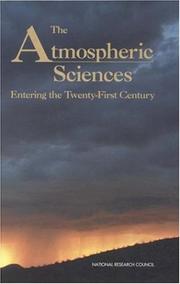
ISBN: 0309064155 0309517656 0585142785 9780585142784 9780309064156 0305064155 0309174295 9780309174299 9780309517652 Year: 1998 Publisher: Washington, D.C. : National Academy Press,
Abstract | Keywords | Export | Availability | Bookmark
 Loading...
Loading...Choose an application
- Reference Manager
- EndNote
- RefWorks (Direct export to RefWorks)
Aerophysics --- Atmosfeer--Chemie --- Atmosferische chemie --- Atmosferische fysica --- Atmospheric chemistry --- Atmospheric physics --- Atmosphère [Chimie de l' ] --- Chemie [Atmosferische ] --- Chemie van de atmosfeer --- Chemistry [Atmospheric ] --- Chimie atmosphérique --- Chimie de l'atmosphère --- Physical meteorology --- Physics [Atmospheric ] --- Physique atmosphérique --- Atmospheric physics - Research - United States. --- Earth & Environmental Sciences --- Meteorology & Climatology --- Research --- Atmospheric physics. --- Atmospheric chemistry. --- Atmospheric sciences --- Geophysics --- Chemistry, Physical and theoretical --- United States --- Meteorology, Physical --- Atmospheric science
Book
ISBN: 9782804163303 280416330X Year: 2011 Publisher: Bruxelles: De Boeck,
Abstract | Keywords | Export | Availability | Bookmark
 Loading...
Loading...Choose an application
- Reference Manager
- EndNote
- RefWorks (Direct export to RefWorks)
Aerophysics --- Atmosfeer --- Atmosfeer--Chemie --- Atmosferische chemie --- Atmosferische fysica --- Atmosphere --- Atmospheric chemistry --- Atmospheric physics --- Atmosphère --- Atmosphère [Chimie de l' ] --- Chemie [Atmosferische ] --- Chemie van de atmosfeer --- Chemistry [Atmospheric ] --- Chimie atmosphérique --- Chimie de l'atmosphère --- Meteorologie --- Meteorology --- Météorologie --- Physical meteorology --- Physics [Atmospheric ] --- Physique atmosphérique --- Physique de l'atmosphère --- Physique de l'atmosphère --- Chimie de l'atmosphère --- Météorologie --- Atmospheric physics. --- Atmospheric chemistry. --- Meteorology.
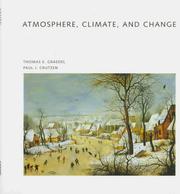
ISBN: 071675049X 0716760282 9780716750499 Year: 1995 Publisher: New York, NY : Scientific American Library,
Abstract | Keywords | Export | Availability | Bookmark
 Loading...
Loading...Choose an application
- Reference Manager
- EndNote
- RefWorks (Direct export to RefWorks)
Atmospheric chemistry. --- Climatology. --- Atmosfeer--Chemie --- Atmosferische chemie --- Atmospheric chemistry --- Atmosphère [Chimie de l' ] --- Chemie [Atmosferische ] --- Chemie van de atmosfeer --- Chemistry [Atmospheric ] --- Chimie atmosphérique --- Chimie de l'atmosphère --- Climate (Uf) --- Chimie de l'atmosphère --- Climatology --- Climatologie --- Climate --- Climatic changes. --- Climate. --- Atmospheric composition --- Global warming --- Models --- Theory --- Atmosphere (earth)
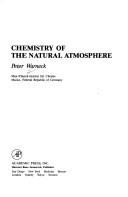
ISBN: 0127356304 9786612288876 1282288873 0080954685 9780127356303 9780080954684 9781282288874 Year: 1988 Volume: 71 Publisher: San Diego, CA : Academic Press,
Abstract | Keywords | Export | Availability | Bookmark
 Loading...
Loading...Choose an application
- Reference Manager
- EndNote
- RefWorks (Direct export to RefWorks)
Chemistry of the natural atmosphere
Atmosfeer--Chemie --- Atmosferische chemie --- Atmospheric chemistry --- Atmosphère [Chimie de l' ] --- Chemie [Atmosferische ] --- Chemie van de atmosfeer --- Chemistry [Atmospheric ] --- Chimie atmosphérique --- Chimie de l'atmosphère --- Atmospheric chemistry. --- Chimie de l'atmosphère. --- #WSCH:AAS1 --- 551.510 --- Chemistry, Physical and theoretical --- 551.510 Physical properties, composition, general structure of the atmosphere --- Physical properties, composition, general structure of the atmosphere --- Atmospheric science --- Atmospheric aerosols. --- Aerosols
Book
ISBN: 1851668896 9401118647 Year: 1993 Volume: vol *2 Publisher: London Elsevier applied science
Abstract | Keywords | Export | Availability | Bookmark
 Loading...
Loading...Choose an application
- Reference Manager
- EndNote
- RefWorks (Direct export to RefWorks)
Atmosfeer--Chemie --- Atmosferische chemie --- Atmospheric chemistry --- Atmosphère [Chimie de l' ] --- Chemie [Atmosferische ] --- Chemie van de atmosfeer --- Chemistry [Atmospheric ] --- Chimie atmosphérique --- Chimie de l'atmosphère --- Grensoverschrijdende milieuverontreiniging --- Grensoverschrijdende milieuvervuiling --- Milieuverontreiniging [Grensoverschrijdende ] --- Milieuvervuiling [Grensoverschrijdende ] --- Pollution transfrontière --- Transboundary pollution --- Transfrontier pollution --- Transnational pollution --- 551.51 --- Air --- -Atmospheric chemistry --- Pollution --- Chemistry, Physical and theoretical --- Atmosphere --- Structure, mechanics, thermodynamics of the atmosphere in general. Dynamic meteorology --- 551.51 Structure, mechanics, thermodynamics of the atmosphere in general. Dynamic meteorology --- Air contaminants --- Air pollutants --- Air pollution --- Air pollution control --- Air toxics --- Airborne pollutants --- Contaminants, Air --- Control of air pollution --- Pollutants, Air --- Toxics, Air --- Air quality --- Atmospheric deposition --- Control --- Atmospheric science
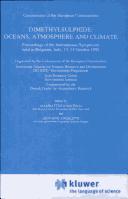
ISBN: 0792324900 9780792324904 Year: 1993 Volume: 43 Publisher: Dordrecht: Kluwer,
Abstract | Keywords | Export | Availability | Bookmark
 Loading...
Loading...Choose an application
- Reference Manager
- EndNote
- RefWorks (Direct export to RefWorks)
Dimethylsulphide (DMS), emitted by marine phytoplankton, is the second most important source of atmospheric sulphur, after anthropogenic SO2. In the atmosphere, DMS is transformed into condensable acidic sulphur products and, through gas-to-particle conversion, it becomes the most important natural source of atmospheric sulphate aerosols. Possible climatic effects have been suggested, linked to the negative radiative forcing due to scattering of solar radiation and especially to modification of cloud albedo over oceans by sulphate aerosol particles. These effects occur in addition to those deriving from the superimposed anthropogenic component of the atmospheric sulphate. Understanding the cycle of DMS in the marine troposphere and its interaction with the aerosol budget and cloud properties has become a key research target in these last years. Our knowledge of the many processes involved is still fragmentary, however. This book, which updates the state of our comprehension of the marine DMS cycle with special regard to its climatic impact, will be of interest to marine biologists, atmospheric chemists, aerosol physicists and climatologists, and to scientists concerned with changes in the Earth's climate.
Atmosfeer--Chemie --- Atmosferische chemie --- Atmospheric chemistry --- Atmosphère [Chimie de l' ] --- Chemie [Atmosferische ] --- Chemie van de atmosfeer --- Chemistry [Atmospheric ] --- Chimie atmosphérique --- Chimie de l'atmosphère --- Atmospheric dimethyl sulfide --- Dimethyl sulfide --- Climatic changes --- Sulfur cycle --- Biogeochemical cycles --- Environmental aspects --- Sulphur cycle --- Dimethyl sulphide --- Dimethylsulfide --- Methyl sulfide --- Sulfides --- Changes, Climatic --- Climate change --- Climate changes --- Climate variations --- Climatic change --- Climatic fluctuations --- Climatic variations --- Global climate changes --- Global climatic changes --- Climatology --- Climate change mitigation --- Teleconnections (Climatology) --- Air --- Atmospheric dimethyl sulphide --- Atmospheric sulfur compounds --- Dimethyl sulfide content --- Changes in climate --- Climate change science --- Global environmental change --- Atmospheric dimethyl sulfide - Congresses --- Dimethyl sulfide - Environmental aspects - Congresses --- Climatic changes - Environmental aspects - Congresses --- Sulfur cycle - Congresses --- Biogeochemical cycles - Congresses
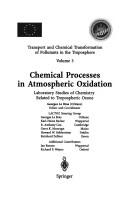
ISBN: 3540609989 9783540609988 364263902X 3642592163 Year: 1997 Volume: 3 Publisher: New York Springer
Abstract | Keywords | Export | Availability | Bookmark
 Loading...
Loading...Choose an application
- Reference Manager
- EndNote
- RefWorks (Direct export to RefWorks)
Oxidation and removal of atmospheric constituents involve complex sequences of reactions which can lead to the production of photo-oxidants such as ozone. In order to understand and model these complex reaction sequences, it is necessary to have a comprehensive understanding of reaction mechanisms and accurate estimates of kinetic parameters for relevant gas-phase atmospheric reactions. This book presents recent advances in the field and includes the following topics: the oxidation of simple organic compounds, NOx kinetics and mechanisms, OH radical production and rate constants for the OH attack on more complex organic compounds, peroxy and alkoxy radical reactions, photo-oxidation of aromatic and biogenic compounds, the interaction between radical species, the nitrate radical and its role in night-time reactions as well as the sources and sinks of HOx and RO2. This book is volume 3 of the series on Transport and Chemical Transformation of Pollutants in the Troposphere.
Atmosfeer--Chemie --- Atmosferische chemie --- Atmospheric chemistry --- Atmospheric ozone --- Atmosphère [Chimie de l' ] --- Chemie [Atmosferische ] --- Chemie van de atmosfeer --- Chemistry [Atmospheric ] --- Chimie atmosphérique --- Chimie de l'atmosphère --- Fotochemische oxydanten --- Oxydanten [Fotochemische ] --- Oxydants [Photochemical ] --- Oxydants photochimiques --- Ozon in de atmosfeer --- Ozone atmosphérique --- Photochemical oxydants --- Troposfeer --- Troposphere --- Troposphère --- Photochemical oxidants --- Oxidizing agents --- Photochemical smog --- Chemistry, Physical and theoretical --- Atmosphere --- Air --- Ozone --- Ozone content --- Atmopsheric chemistry. --- Photochemical oxidants. --- Atmospheric science --- Air pollution. --- Geophysics. --- Physical chemistry. --- Atmospheric sciences. --- Analytical chemistry. --- Atmospheric Protection/Air Quality Control/Air Pollution. --- Geophysics/Geodesy. --- Physical Chemistry. --- Atmospheric Sciences. --- Analytical Chemistry. --- Analysis, Chemical --- Analytic chemistry --- Chemical analysis --- Chemistry, Analytic --- Chemistry --- Atmospheric sciences --- Earth sciences --- Chemistry, Theoretical --- Physical chemistry --- Theoretical chemistry --- Geological physics --- Terrestrial physics --- Physics --- Air contaminants --- Air pollutants --- Air pollution --- Air pollution control --- Air toxics --- Airborne pollutants --- Contaminants, Air --- Control of air pollution --- Pollutants, Air --- Toxics, Air --- Pollution --- Air quality --- Atmospheric deposition --- Control --- Troposphere. --- Atmospheric ozone. --- Atmospheric chemistry.
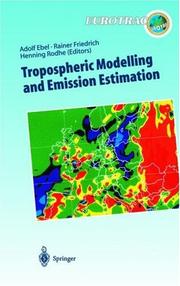
ISBN: 3540631690 9783540631699 3642083196 3662034700 Year: 1997 Volume: v. 7 Publisher: Berlin Springer
Abstract | Keywords | Export | Availability | Bookmark
 Loading...
Loading...Choose an application
- Reference Manager
- EndNote
- RefWorks (Direct export to RefWorks)
The end result of policy-related experimental and theoretical scientific work on the abatement of atmospheric emissions is a hierarchy of computer models that can be used to analyse and predict the behaviour of pollutants on urban, local regional and global scales. Such models are required to simulate an extremely complex natural situation in which a non-linear chemistry must be included together with the vagaries of the meteorology and the terrain. To this must be added the uncertainties in the data provided to the model, particularly in the estimates of the emissions of pollutants and their precursors, both of anthropogenic and natural origin. This book describes recent advances in the development and application of models on all scales, and in the techniques for the estimation and verification of emissions. It includes reviews of recent work together with detailed results and so provides a useful picture of the field in a European context. This book is Volume 7 of the series on Transport and Chemical Transformation of Pollutants in the Troposphere.
Air quality control --- Air quality management --- Air quality--Management --- Atmosfeer--Chemie --- Atmosferische chemie --- Atmospheric chemistry --- Atmosphère [Chimie de l' ] --- Chemie [Atmosferische ] --- Chemie [Troposferische ] --- Chemie van de atmosfeer --- Chemistry [Atmospheric ] --- Chemistry [Tropospheric ] --- Chimie atmosphérique --- Chimie de l'atmosphère --- Chimie troposphérique --- Luchtkwaliteit--Beheer --- Qualité de l'air--Gestion --- Troposferische chemie --- Tropospheric chemistry --- Air --- Chemistry, Tropospheric --- Chemistry, Physical and theoretical --- Atmosphere --- Pollution&delete& --- Mathematical models --- Troposphere --- Measurement --- Pollution --- Environmental aspects --- Mathematical models. --- Atmospheric sciences. --- Air pollution. --- Atmospheric Sciences. --- Atmospheric Protection/Air Quality Control/Air Pollution. --- Air contaminants --- Air pollutants --- Air pollution --- Air pollution control --- Air toxics --- Airborne pollutants --- Contaminants, Air --- Control of air pollution --- Pollutants, Air --- Toxics, Air --- Air quality --- Atmospheric deposition --- Atmospheric sciences --- Earth sciences --- Control
| Listing 1 - 10 of 10 |
Sort by
|

 Search
Search Feedback
Feedback About
About Help
Help News
News